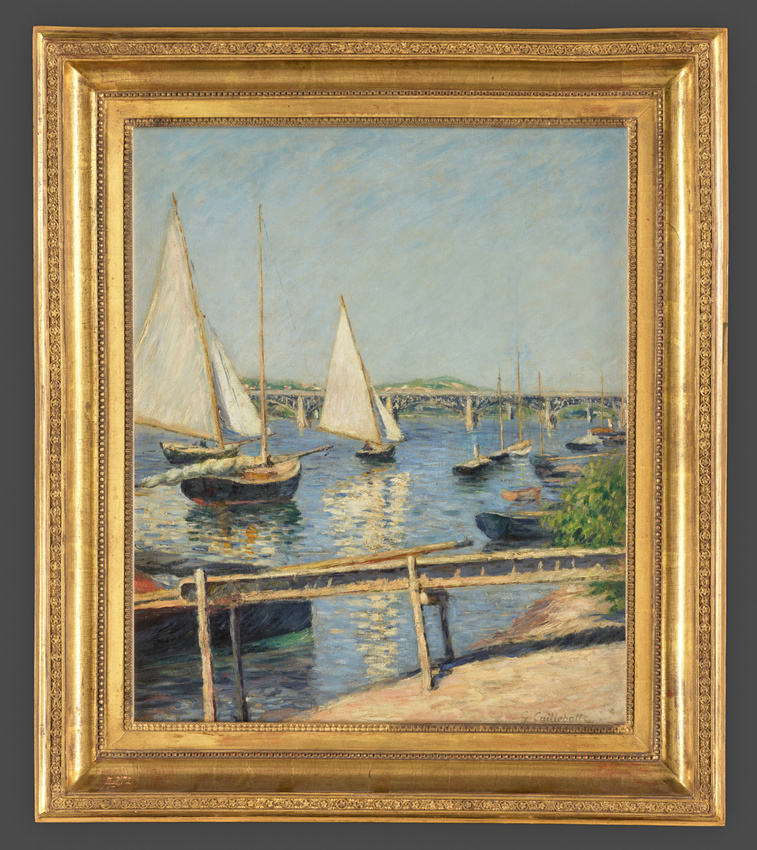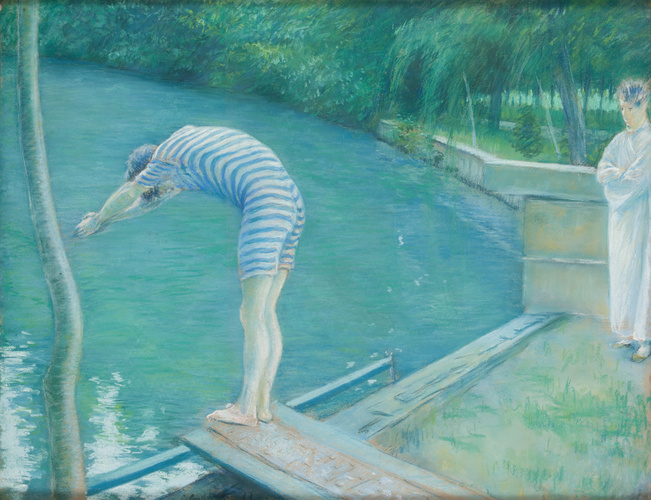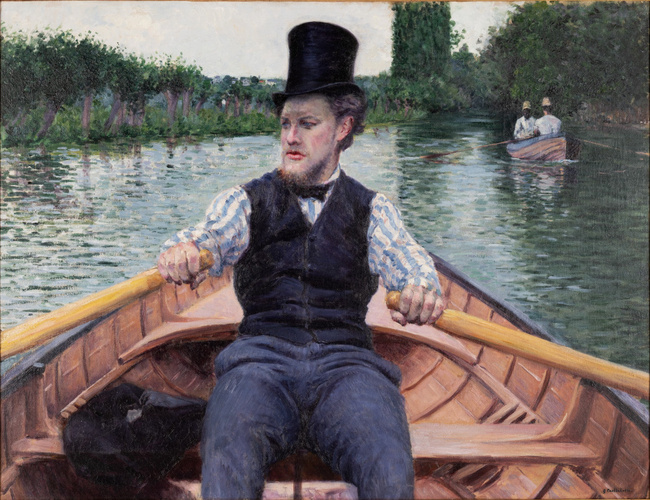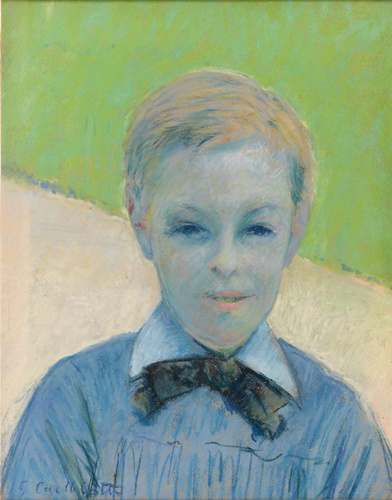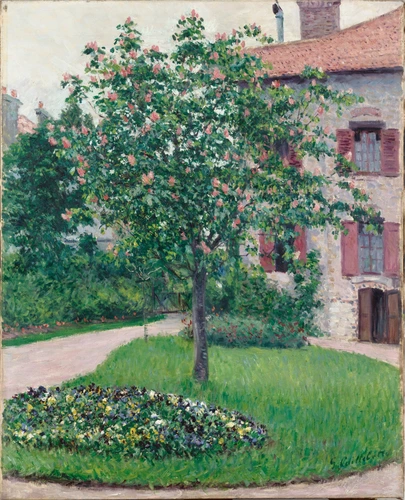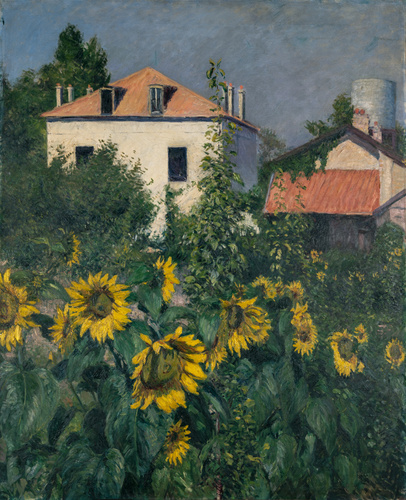Voiliers à Argenteuil
Caillebotte was passionate about sailing. From 1879 onwards, he won regattas on the Seine and attracted attention for his luxurious and innovative boats. At the end of his life, he even, went on to become a renowned yacht builder, his passion for boats having won out over painting. In 1881, he bought a house in Petit-Gennevilliers, across the Seine from Argenteuil, where the elegant yacht club, the Cercle de la Voile de Paris, had its moorings. Shortly afterwards, this house became his main residence.
He therefore naturally began to paint "boaters" and sailing boats. His view was of course influenced by Monet who, having moved to Argenteuil in 1871, made the sailing boats on the Seine one of his preferred motifs. Manet, Renoir and Sisley had also tackled this theme extensively. So Caillebotte seemed old-fashioned, or certainly lagging behind the times, when he exhibited views of boats on the Seine in 1888. But the fact remains that some of these paintings, such as this one, are very successful in the balance of composition and the quality of the light he conjures up.
In this painting we see the flotilla of pleasure boats moored downstream from the old wooden bridge at Argenteuil. Behind the arches we can make out the supports of the railway bridge and the hills of Sannois and Orgemont. Painted rapidly, and probably from life, this painting, depicting the shimmering reflections of the river, is nonetheless well structured using strong, horizontal and vertical lines (the bridge and the masts). These are immediately countered by subtle obliques (the landing stage and sails) that give rhythm to the composition. The pictorial surface is heavily worked with broad, closely juxtaposed brushstrokes, very different from the more fluid effects of Monet and Renoir.

